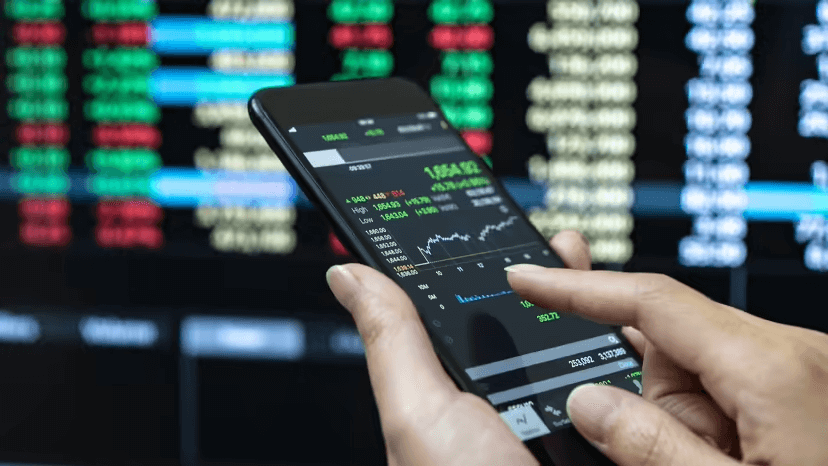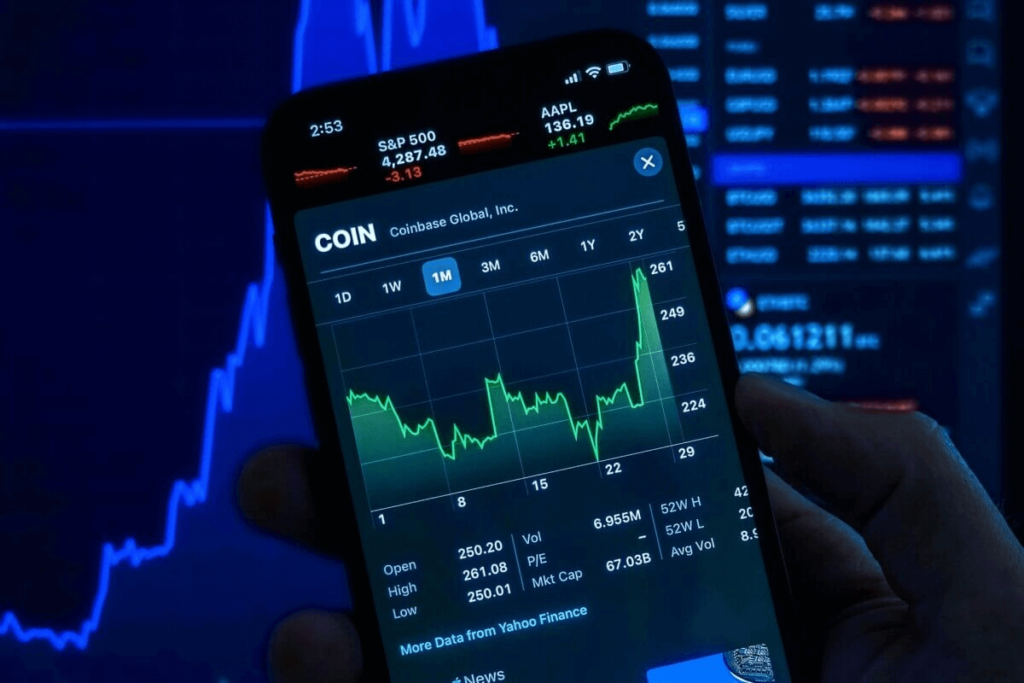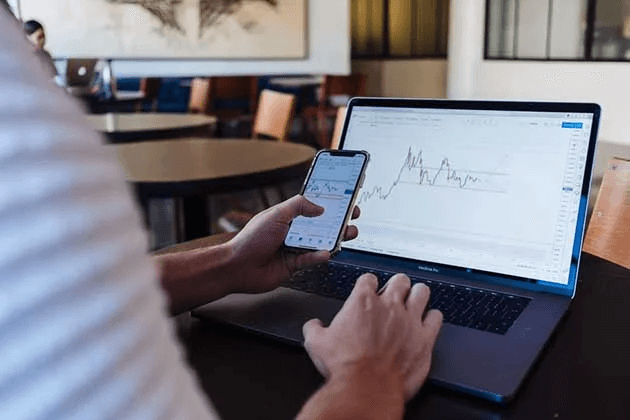Trading
What Is Online Trading and How Can You Get Started?
Published
4 months agoon
Online trading refers to the buying and selling of financial assets through internet-based platforms. These assets can include currencies, stocks, commodities, indices, and other instruments. The process allows individuals to place trades directly without the need for traditional brokers or physical trading floors.
Since the early 2000s, internet access and digital technology have made trading more accessible to everyday individuals. Today, anyone with a stable connection, some initial capital, and a verified account on an online trading platform can start participating in the global financial markets.
What is Online Trading?
Online trading covers multiple financial instruments, each with its own characteristics and market behavior. Some of the most commonly traded instruments include:
- Foreign Exchange (Forex): Currencies traded in pairs, such as EUR/USD or GBP/JPY. This is one of the most liquid and active markets.
- Stocks: Shares of publicly listed companies.
- Indices: Groups of stocks combined into a single instrument (e.g., a national index).
- Commodities: Physical goods like oil, gold, and agricultural products.
- Cryptocurrencies: Digital currencies traded via specific exchanges.
Traders can speculate on price movements by opening positions—either buying (going long) or selling (going short)—depending on whether they believe the price will rise or fall.

How Online Trading Works
An online trading platform acts as the medium between traders and financial markets. These platforms provide real-time price data, charting tools, order execution, and account management.
Once registered and verified, traders can fund their accounts and begin placing trades. Each trade involves selecting an asset, deciding on the trade direction, setting a position size, and confirming the order. Many platforms also offer additional features such as stop-loss and take-profit settings, which allow traders to control their risk and secure potential profits automatically.
Online trading is based on speculation, not ownership. For example, trading a currency pair doesn’t mean you own either currency—it means you’re speculating on the exchange rate between them. Profits or losses are realized when you close the position.
Market Participants
Online markets attract a wide range of participants. These include:
- Retail traders: Individuals trading their own funds.
- Institutional traders: Banks, hedge funds, and financial institutions.
- Market makers: Entities that provide liquidity by continuously quoting buy and sell prices.
Retail traders, especially beginners, operate with fewer resources and less information compared to institutional participants. However, with the right tools and knowledge, individuals can still participate effectively.
Basic Requirements to Start Trading
To begin online trading, the following components are essential:
- Reliable internet access: Trading requires uninterrupted connectivity.
- Device: A computer, laptop, or mobile phone with trading software or app.
- Trading account: Opened through a regulated provider, typically requiring ID verification.
- Initial capital: Minimum deposit varies by provider, commonly starting from $100 to $500.
- Basic knowledge: Understanding market mechanics, price charts, and risk management is necessary before placing real trades.
Additionally, many platforms offer demo accounts where you can trade with virtual funds. This feature is useful for practicing and understanding how the platform functions without financial risk.

Key Concepts Every Trader Should Know
Spread and Commission
Every trade comes with a cost. This cost may come in the form of a spread—the difference between the buy and sell price—or a fixed commission per trade. These fees directly affect the profitability of trades.
Margin and Leverage
Online trading often involves trading with borrowed funds, known as margin. This is facilitated through leverage, which allows traders to control larger positions with a smaller amount of capital. While it increases profit potential, it also raises the risk of amplified losses.
Risk Management
Risk management is fundamental to trading. This includes setting stop-loss levels, limiting position sizes, and not risking more than a small percentage of total capital per trade. Consistent application of risk controls is a key factor in long-term survival in the market.
Tools and Resources
Effective trading requires access to reliable data and tools for analysis. Some essential resources include:
- Charts and indicators: Most platforms provide candlestick charts and technical indicators like Moving Averages or RSI.
- Economic calendars: Used to monitor scheduled economic events that may affect market prices (source: tradingeconomics.com).
- News feeds: Real-time financial news can influence volatility and trading decisions.
- Market analysis websites: Trusted platforms such as tradingview.com provide community insights, charting, and discussion forums.
Traders typically combine technical analysis (based on price charts) with fundamental analysis (based on economic data or news) to make informed decisions.

What Are the Risks?
Trading involves financial risk. The price of assets can move unpredictably, and high leverage can result in losses that exceed the initial deposit. Some common risks include:
- Market risk: The risk of asset price moving against your position.
- Liquidity risk: Difficulty in entering or exiting a position at a desired price.
- Execution risk: Delays or technical issues causing incorrect or missed trades.
- Psychological factors: Emotional trading can lead to impulsive decisions and poor outcomes.
Understanding these risks before starting can help prevent avoidable losses.
Getting Started Step-by-Step
While each provider has its own process, the general steps to begin trading include:
- Research and select a trading provider.
- Open and verify a trading account.
- Deposit funds using a supported payment method.
- Choose a market to trade (e.g., Forex, stocks, commodities).
- Use a demo account to practice if available.
- Place your first real trade with a small position size.
- Monitor, review, and learn from your trades regularly.
There is no universal strategy that works for everyone. Trading styles differ based on risk tolerance, time commitment, and personal preference. Testing and refining approaches through small, controlled trades is generally safer than aiming for immediate gains.
Final Thoughts
Online trading offers access to global financial markets without requiring large capital or institutional backing. It can be a practical tool for individuals interested in market speculation, portfolio diversification, or active investing. However, it requires discipline, preparation, and a continuous effort to understand how markets behave.
Approach trading with realistic expectations. Losses are part of the process, especially during the learning phase. Building knowledge, staying updated with market news, and applying proper risk control can support more informed decisions and long-term engagement.

You may like

EU Court Annuls DSA Fee Method — What It Means for Meta & TikTok

YouTube View Counts Are Down: Ad Blockers May Be the Reason — Do This Now

Amazon Hardware Event 2025 (Sep 30): Time, How to Watch & What to Expect

iPhone 17 Launch Day NZ (Sep 19): Find Stock Fast, Pickup Tips & Best Deals

The Top 5 Mistakes People Make When Moving (And How to Avoid Them)

6 Major Perks of Using Luxury Car Rental Atlanta Airport Services

Apple s New EU App Store Fees Explained (2025): What Changes Under the DMA and What Developers Should Do Now

Apple Is Testing Foldable iPhone Production What That Means for 2026

TikTok Ban Deadline Extended to Dec 16, 2025 What It Means

